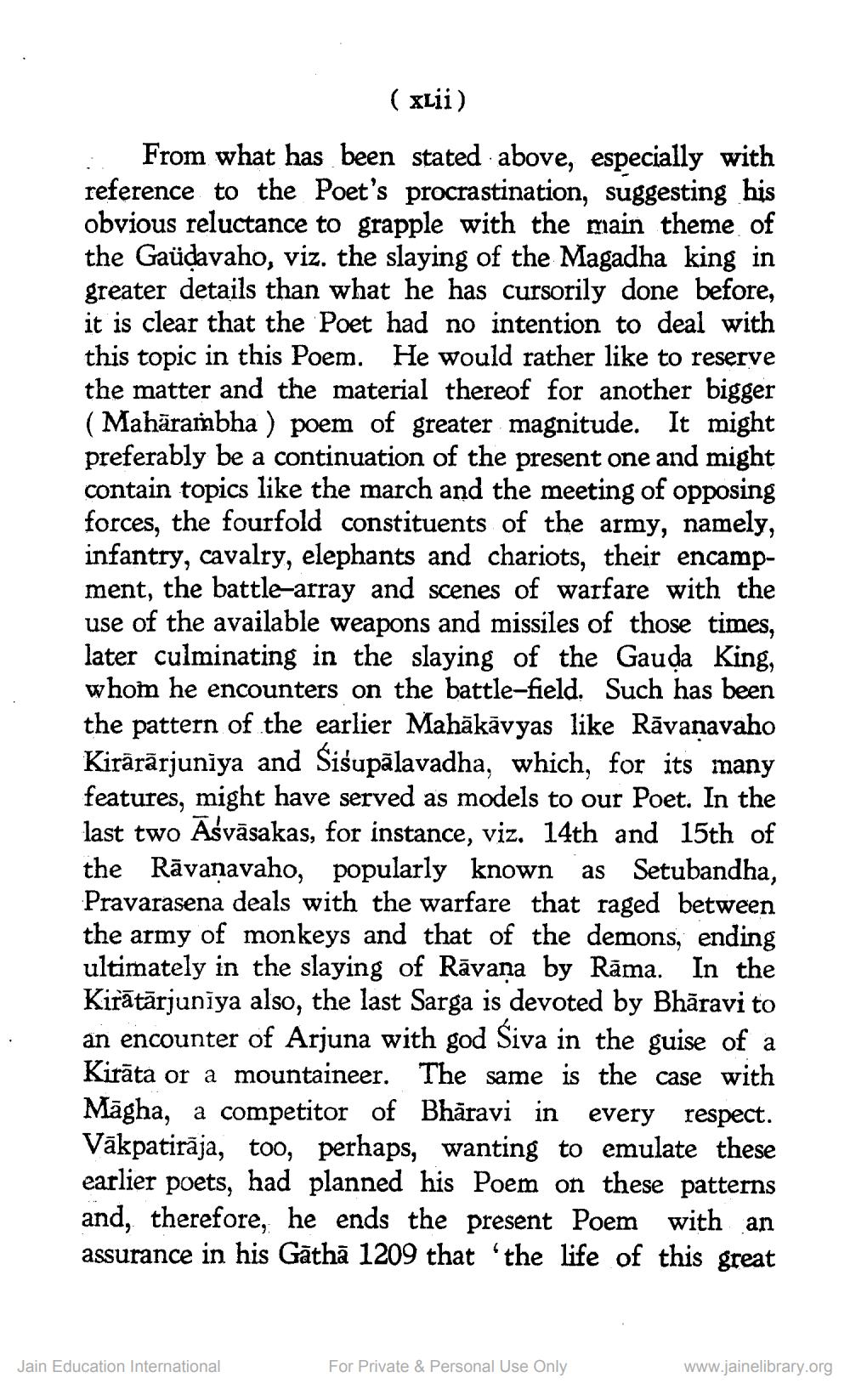________________
( xlii)
: From what has been stated above, especially with reference to the Poet's procrastination, suggesting his obvious reluctance to grapple with the main theme of the Gaüdavaho, viz. the slaying of the Magadha king in greater details than what he has cursorily done before, it is clear that the Poet had no intention to deal with this topic in this Poem. He would rather like to reserve the matter and the material thereof for another bigger ( Mahārambha ) poem of greater magnitude. It might preferably be a continuation of the present one and might contain topics like the march and the meeting of opposing forces, the fourfold constituents of the army, namely, infantry, cavalry, elephants and chariots, their encampment, the battle-array and scenes of warfare with the use of the available weapons and missiles of those times, later culminating in the slaying of the Gauda King, whom he encounters on the battle-field. Such has been the pattern of the earlier Mahākāvyas like Rāvanavaho Kirārārjuniya and Siśupālavadha, which, for its many features, might have served as models to our Poet. In the last two Āśvāsakas, for instance, viz. 14th and 15th of the Rāvanavaho, popularly known as Setubandha, Pravarasena deals with the warfare that raged between the army of monkeys and that of the demons, ending ultimately in the slaying of Rāvana by Rāma. In the Kirātārjuniya also, the last Sarga is devoted by Bhāravi to an encounter of Arjuna with god Siva in the guise of a Kirāta or a mountaineer. The same is the case with Māgha, a competitor of Bhāravi in every respect. Vākpatirāja, too, perhaps, wanting to emulate these earlier poets, had planned his Poem on these patterns and, therefore, he ends the present Poem with an assurance in his Gāthā 1209 that 'the life of this great
Jain Education International
For Private & Personal Use Only
www.jainelibrary.org




